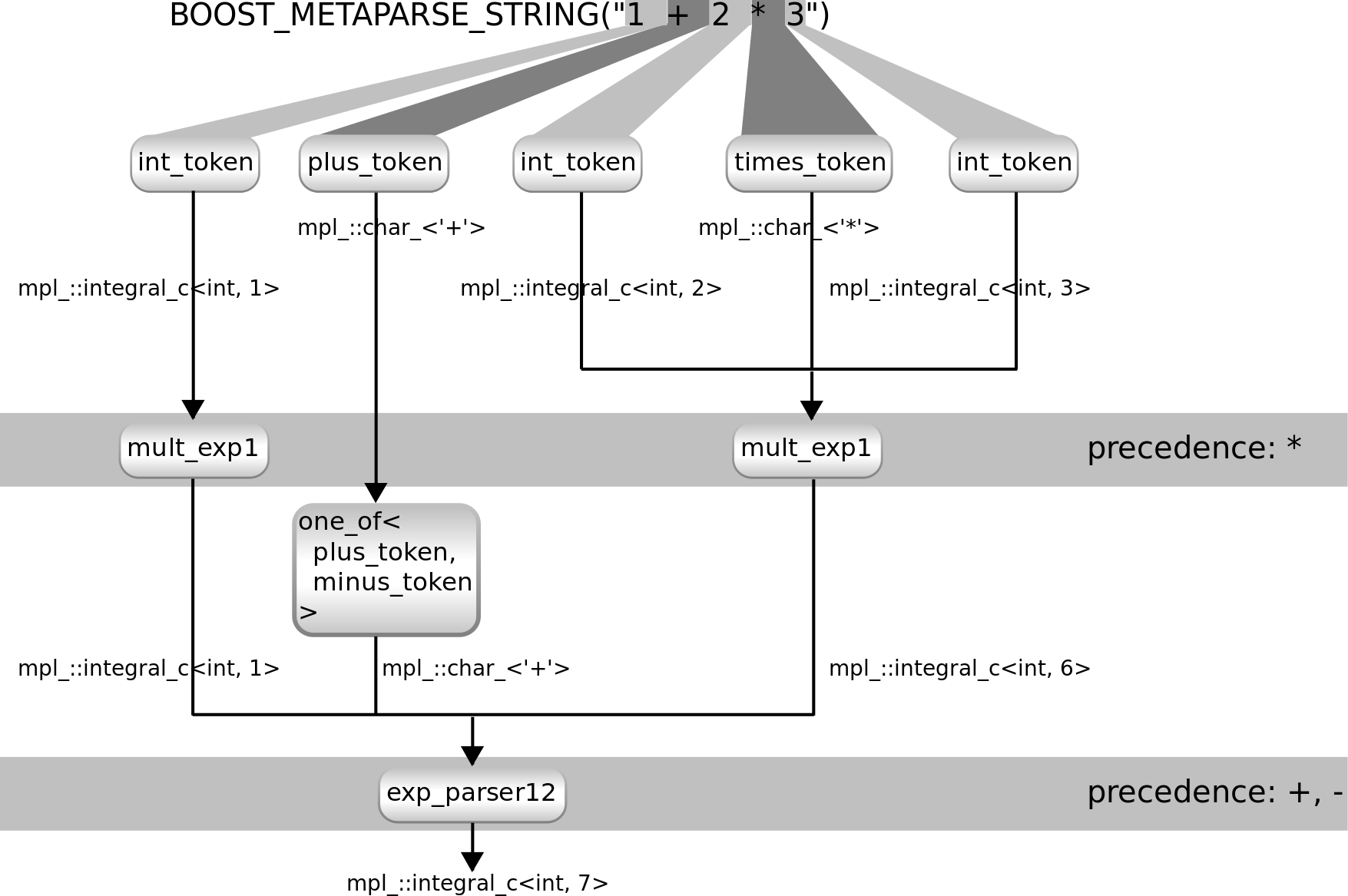
 |
Home | Libraries | People | FAQ | More |
![[Note]](../../../images/note.png) |
Note |
|---|---|
Note that you can find everything that has been included and defined so far here. |
Let's make it possible for different operators to have different precedence.
To do this, we define a new parser for parsing expressions containing only
* operators (that is the operator
with the lowest precedence):
> using mult_exp1 = foldl_start_with_parser<sequence<times_token, int_token>, int_token, boost::mpl::quote2<binary_op>>;
mult_exp1 can parse expressions
containing only * operator.
For example 3 *
2 or 6
* 7 * 8. Now
we can create a parser supporting only the +
and - operators but instead
of separating numbers with these operators we will
separate expressions containing only *
operators. This means that the expression 1
* 2 + 3 *
4 is interpreted as the expressions
1 *
2 and 3
* 4
separated by a + operator.
A number (eg. 13) is the special
case of an expression containing only *
operators.
Here is the parser implementing this:
> using exp_parser15 = \ ...> build_parser< \ ...> foldl_start_with_parser< \ ...> sequence<one_of<plus_token, minus_token>, mult_exp1>, \ ...> mult_exp1, \ ...> boost::mpl::quote2<binary_op> \ ...> > \ ...> >;
Note that this is almost the same as exp_parser13.
The only difference is that it uses mult_exp1
everywhere, where exp_parser13
was using int_token. Let's
try it out:
> exp_parser15::apply<BOOST_METAPARSE_STRING("1 + 2 * 3")>::type mpl_::integral_c<int, 7>
This takes the precedence rules into account. The following diagram shows how it works:

Subexpressions using * operators
only are evaluated (by mult_exp1)
and treated as single units while interpreting expressions using + and -
operators. Numbers not surrounded by *
operators are treated also as operators using *
only (containing no operations but a number).
If you need more layers (eg. introducing the ^
operator) you can extend this solution with further layers. The order of
the layers determine the precedence of the operators.